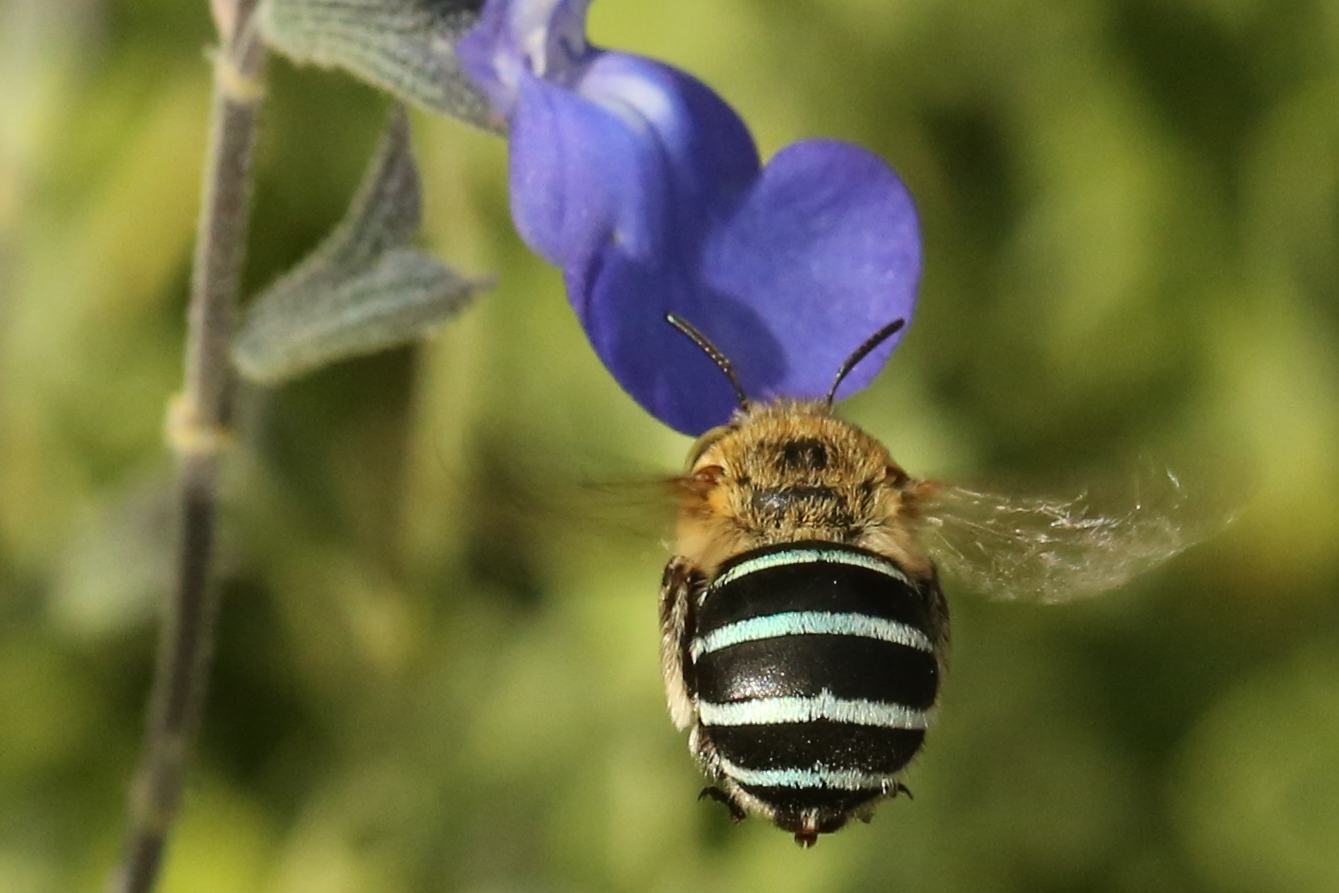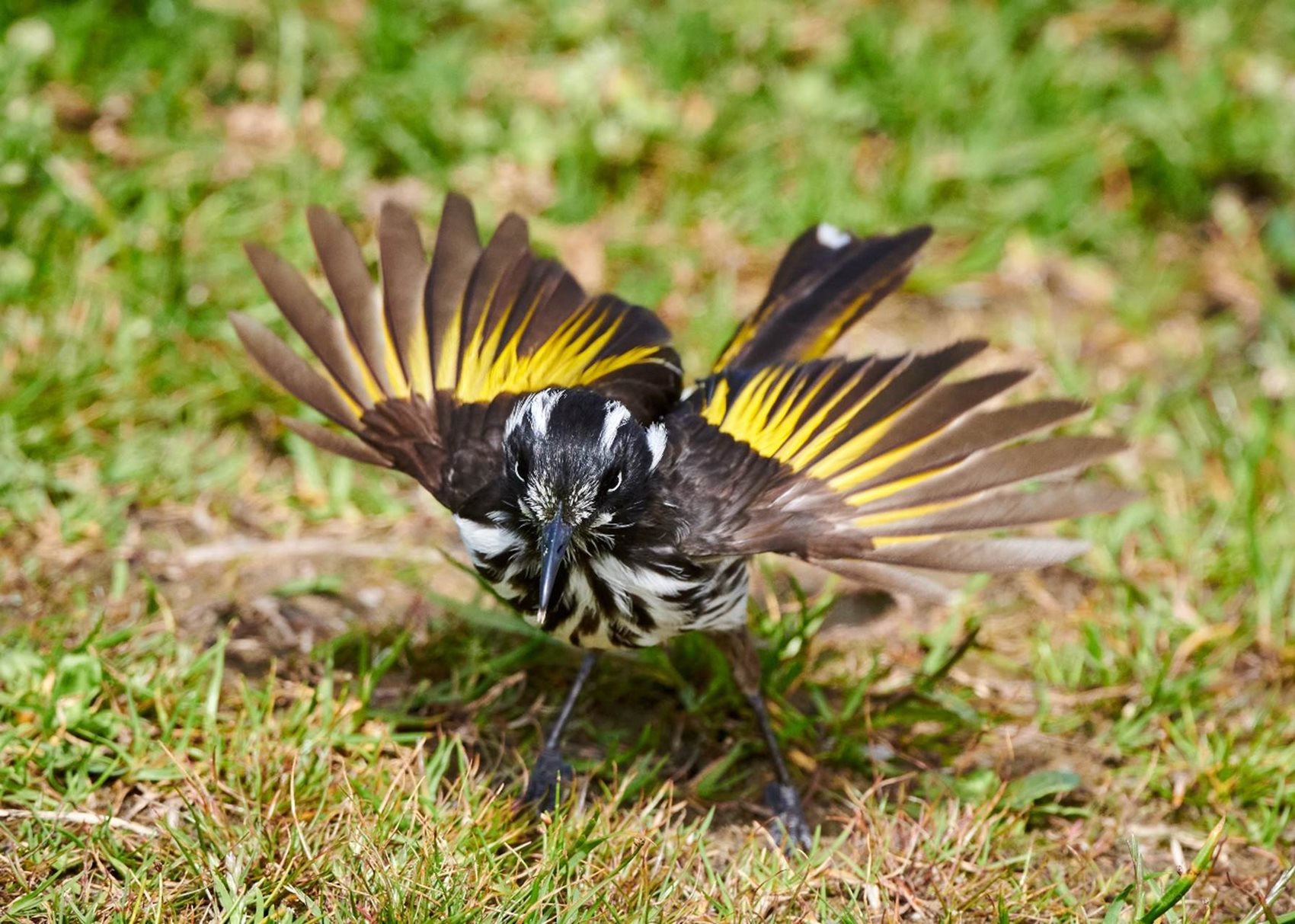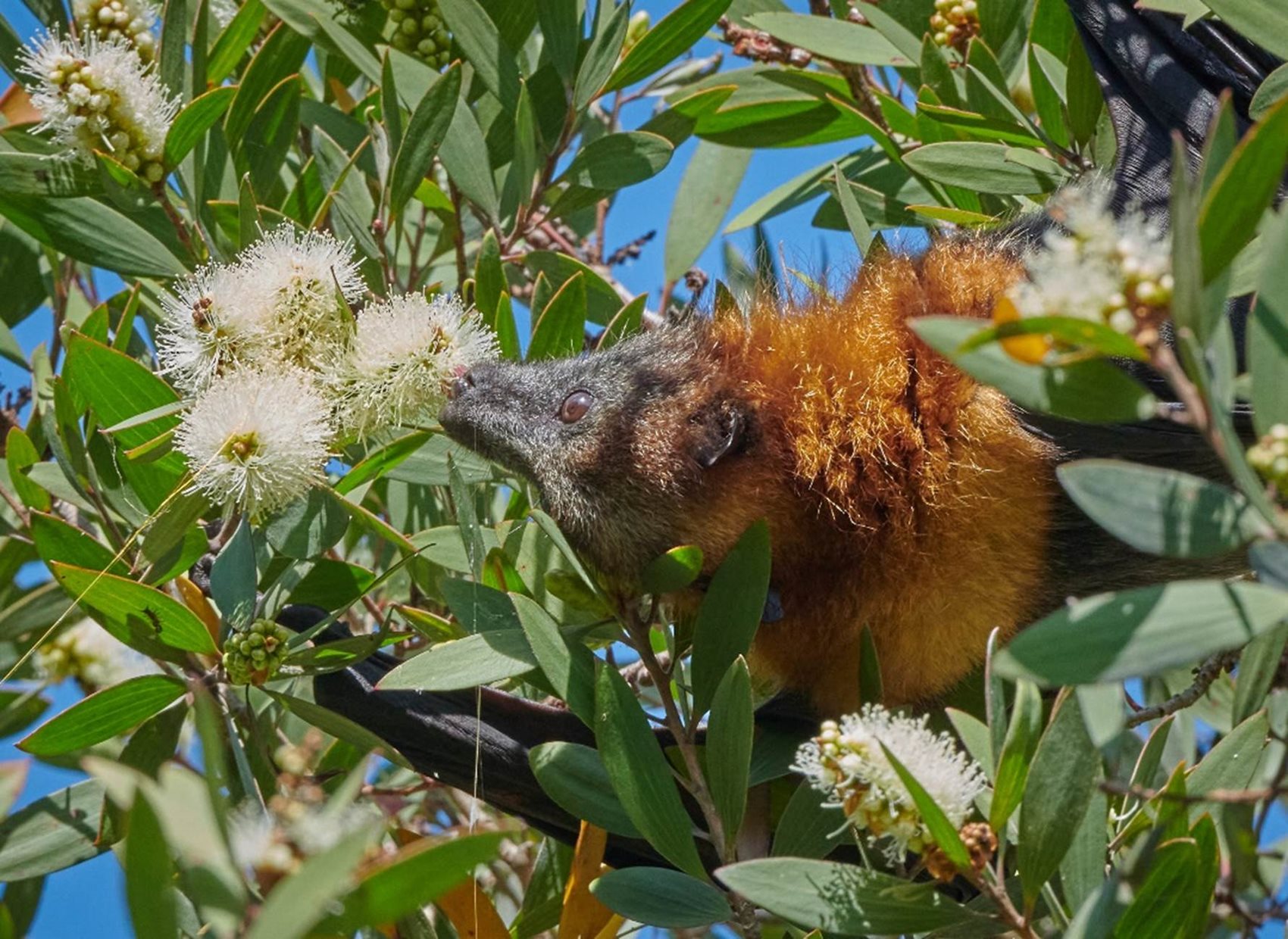Australian Pollinator Week is held every year between 12-20 November. This week recognises our important and unique Australian mammal, insect and other flying pollinators who work hard throughout spring when many flowers are in bloom.
At Centennial Parklands we host a wealth of different pollinator species who utilise our rich natural environment. Some of these pollinators have a great impact within the park, but others have an impact far further afield. Below we have profiled different species who we think are some of our pollinator heroes at Centennial Parklands.
Native bees
It’s a fact not widely known that Australia has one of the highest rates of bee diversity in the world. We host around 1700 species of bees, including some ancient, primitive species.
Bees are commonly thought to occupy hives and thrive in vast colonies, but surprisingly most of Australia’s bees are solitary. They live in pairs, using holes in the ground, dead timber and natural features like the flower spikes of grasstrees to host their brood chambers. Unusually they do not make honey or provide any care to their young. Some examples include leaf cutter bees, carpenter bees and blue banded bees. These species have some amazing relationships with plants, having coevolved to depend on one another.
 Australian blue banded native bee
Australian blue banded native bee
“Blue banded bees have evolved a head banging behaviour that releases pollen from flowers such as grevilleas. Without this buzz pollination the flowers cannot be pollinated.”
The only species of colonial bee living in Sydney are the sugarbag bees, Tetragonula carbonaria. They are tiny, stingless insects that look like little black flies. In natural areas they use hollows in trees to build their beautiful spiral honeycombs, but in the parklands, we have provided many hive boxes for our growing population. Unlike European bees which can fly kilometres, sugarbag bees only travel as far as 500 metres from their hive, so hives can be quite densely situated. During spring months, they swarm, moving off to find new hives.
“The tiny sugarbag bees is a fantastic pollinator of native species and can access pollen in our small native flowers which European bees cannot reach.”
Our solitary colonial bees both need native plants and natural habitat to thrive. In the parklands they are threatened with habitat loss, a lack of appropriate fire regimes and poor species diversity. If allowed to thrive they will help our native species in the Eastern Suburbs Banksia scrub set seed.
Are these native bees our pollinator heroes?
Native Birds
Centennial Parklands hosts more than 120 species of birds. Some are common residents and others are migratory visitors who utilise this island of green in the urban environment. Many of these birds rely on nectar and in doing so, naturally become important pollinators. Some of our most common birds are significant like the rainbow lorikeets and noisy miners, however many of our less common species of honeyeaters have important relationships with native species. Flowers are often specifically evolved to suit a particular pollinator, and if it is absent then that species suffers.
“An important pollinator of the Eastern suburbs’ vegetation is the New Holland Honeyeater.”
 The New Holand Honeyeater bird
The New Holand Honeyeater bird
The New Holland Honeyeater is a small bird, with attractive plumage and a curved bill. Its long bill and tongue are adapted to access nectar within tubular flowers, such as those on the beautiful heath plant genus, Lambertia.
Unfortunately, these honeyeaters, which were once commonly seen in the parklands are becoming rarer to sight. There are many reasons, including the success of competing species such as miners, with a change in garden style being a principal reason. Older and more established gardens with many dense bushes and a wide range of native species support these birds. However, modern formal styles with a limited range of species and sparsely planted beds provide no habitat value. If you are looking for a way of promoting nectar eating birds, why not consider planting a dense native garden, or mixing it up with a range of species that flower year-round?
For its role in pollinating unique local plant species, is the New Holland Honeyeater our pollinator hero?
Mammalian Pollinators
A little-known fact is just how important mammals are to Australian plants. Many species found in the eastern suburbs, like banksias, rely just as much on mammals as they do birds or insects for their pollination services. They have evolved features like large and robust flowers to support the weight of mammalian pollinators and frequently bear the flowers inside the branches to protect nocturnal possums and bats from predators as they forage. Unfortunately, we have lost important species like the Eastern Pygmy Possum and small gliders from the Sydney environment, but we still have species like ring tailed possums which play a vital role.
"One iconic group of park superstar pollinators, and arguably the most important, is the colony of Grey Headed Flying Foxes (fruit bats) whose giant breeding camp is such a feature of the paperbark swamp at the heart of Centennial Parklands.”
 Grey Headed Flying Foxes at Centennial Park
Grey Headed Flying Foxes at Centennial Park
Not many people know that flying foxes rely as much on nectar as they do fruit, to fuel their huge flying muscles. They fly hundreds and even thousands of kilometres up and down NSW, looking for flowering eucalyptus.
Gum trees are unusual, in that they often flower in response to environmental conditions, rather than the seasons. The fact that fruit bats can cover such huge distances means that a pollinator is always present, one that can then move that vital genetic material large distances and enable genetic exchange between isolated populations. Eucalypts have evolved to rely on these bats by producing the majority of their pollen and nectar at night when they are active. Without flying foxes, our native forests would be catastrophically affected.
Sadly, flying foxes of all species are under great threat. Climate change is resulting in many more days when the bats suffer heat stress that can wipe out whole camps. Habitat destruction and fragmentation of our forests means they must travel further to find food. And conflict with humans, over fruit crops and camps result in the bats being chased away and even removed.
What can we do to help? Just understand and appreciate these beautiful animals, and maybe put up with their camps, despite them being a bit smelly and noisy. Even more importantly, take steps to preserve native environments and climate change by being an advocate for action.
So, is the flying fox our pollinator hero?
You can enrol with Centennial Parklands as a volunteer and help monitor our bat camp at our quarterly bat counts.
Australian Pollinator Count
It’s census time for Australian pollinators (12-20 November), and they need your help. Taking part is quick and easy. You simply need to observe some flowers for 10 minutes, record the pollinators you see and register your results.